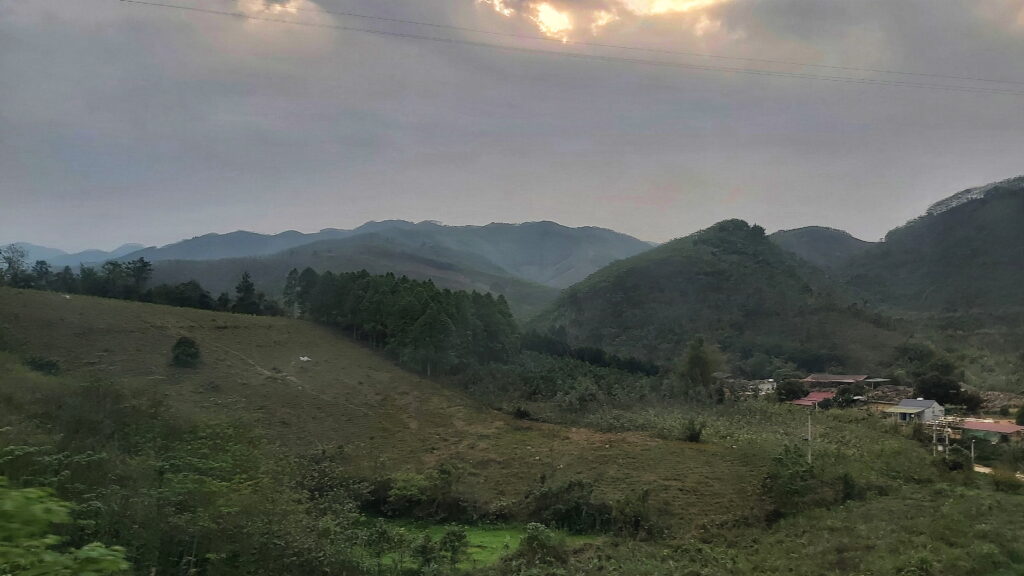FOG & MUD IN SCENIC SA PA
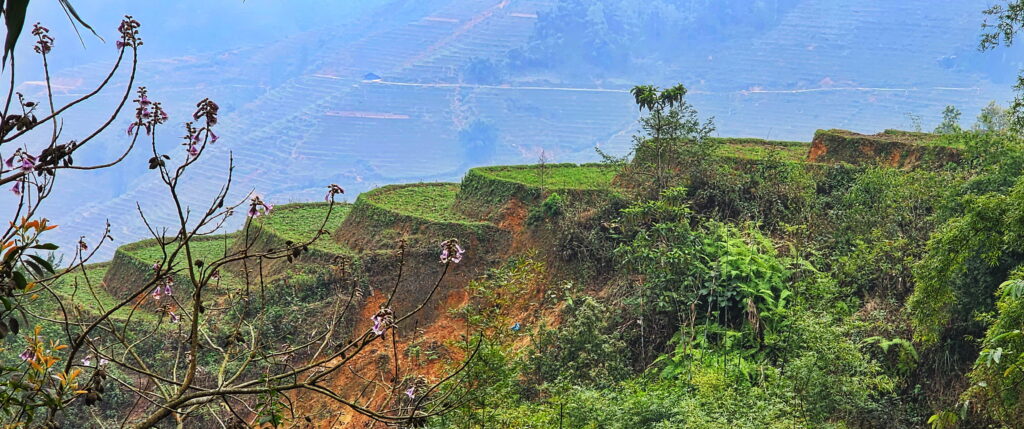
Uncooperative weather is one of the constant enemies of the camera-toting occasional traveller. It roared down mercilessly on our half-day trek through the rice fields of Sa Pa in Vietnam. And they say March is a good time to travel there. It was 2023. Perhaps climate change has something to do with this. Thick milky boundless fog enveloped the town as we walked miserably towards the meeting point. We could not even see the sky and there seemed to be no prospect of the sun piercing the clouds for the rest of the day.
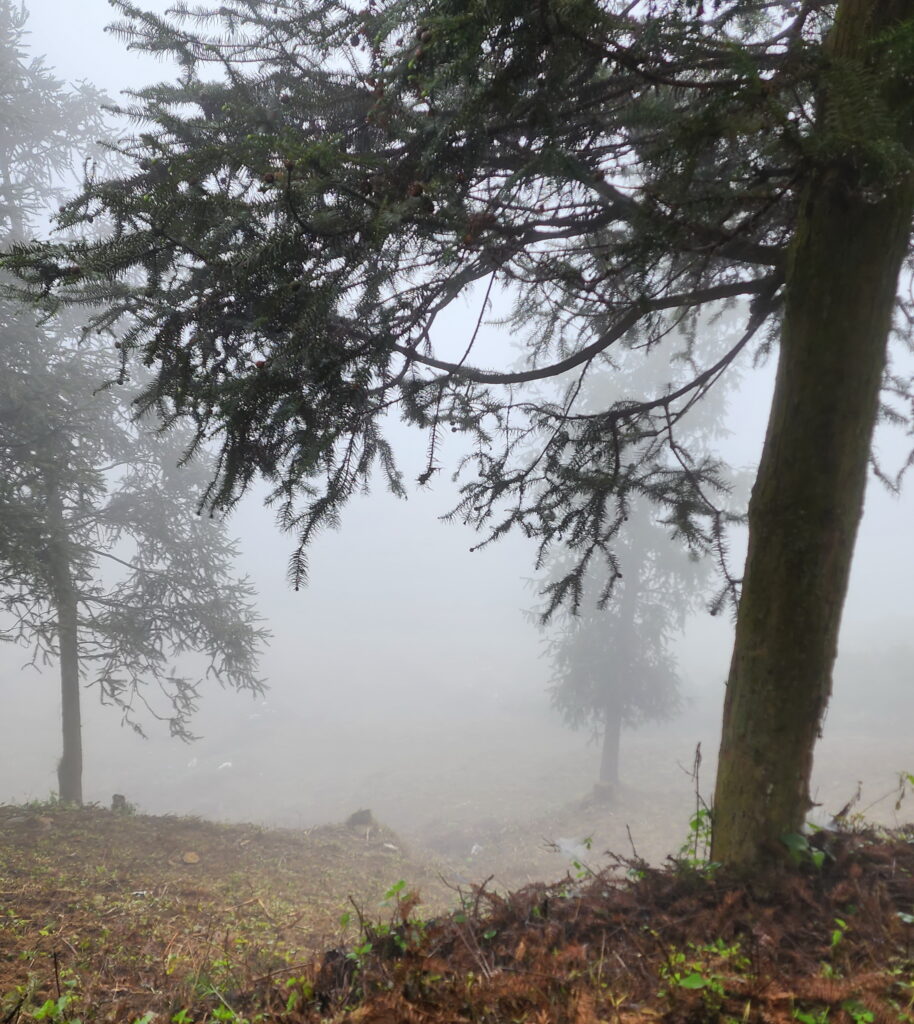
Our tour guide was Lily, a pleasant petite Hmong guide dressed up in her bright pink and blue native attire. She had a long umbrella, almost her height, slung across her back like a sword, ready to be unsheathed at a moment’s notice to battle the elements. She spoke fairly good English, and like our guide yesterday at Cat Cat village, claimed she learned it from guiding tourists around—maybe from Youtube too, since she seemed very adept at using her mobile phone.
Lily picked up a few more travellers from hotels along the way as we walked towards the starting point of the trek to Lao Cai village. There were eight of us—my wife and I, an Italian chef from Spain, a Korean translator, two Japanese students and a Chinese American couple. A few Hmong women followed close by and tried to engage us in simple English which was limited to the universal ice-breaker phrases, “What is your name?” and “Where are you from?”. One was carrying a baby on her back while the others had bags and baskets with them. They were all in their traditional garb, except for one young girl in normal clothes. Perhaps she was a typical teenager rebelling against her tribal elders. I thought they would disperse if we did not show interest in what they were peddling. But they were persistent, and I realized later they had a game plan. They seemed well prepared, with wellies, umbrellas, scarves, etc.
Soon we reached the pathway to the valley and Lily asked the group if we wanted to take the easy way or the harder but longer one. Though I was prepared to tough it out to test the limits of my lumbar stenosis (diagnosed a few months ago), I was tempted to take the easy way, especially if the inclement weather is unlikely to let me experience the glorious scenery promised in travel brochures. After a slight hesitation out of mutual deference and politeness, the American Chinese said he would prefer to take the harder route but will follow the majority preference. This is a classic Asian strategy to get what you want. Nobody wants to be nimby-pamby, so we marched straight towards the incline down to the valley.
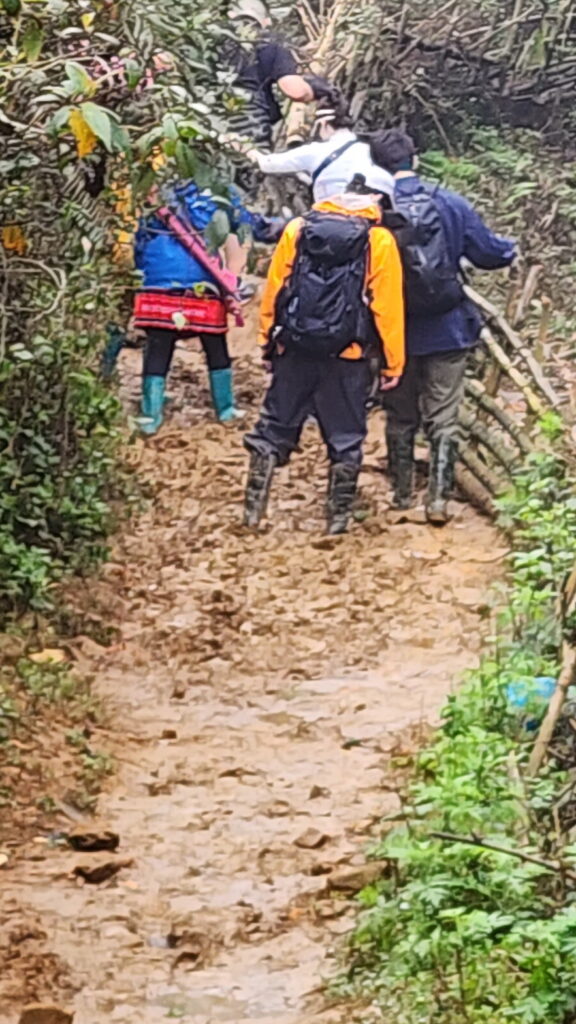
It was mud all the way. If the scenery around me was beautiful, I missed it since I was solely focused on not falling or slipping while climbing up and down in the gluey mud. The worst is to land on one of the scattered blobs of black cow dung. At one place I saw an abandoned shoe and some socks soaking in mud, evidence of some unfortunate victim succumbing to the soggy sludge. As we hesistantly stepped from puddle to puddle, the Hmong women sprang into action, holding our hands and helping us city folks negotiate what to them must be a walk in the park. The woman with the baby and the teenager seemed to spot my vulnerability instantly and were always nearby to offer their hands. In truth, I was grateful they were around to help, though I can roughly guess their sale strategy. But I shouldn’t be ungrateful!
After about an hour into the trek, the fog dispersed slightly, allowing us a glimpse of what would have been green valleys of rice terraces. We passed by forlorn-looking shoulder-height rice bunds and lonely farmhouses, some with mongrel dogs laying lazily, unperturbed by mud-sloshing tourists. Our hard work battling the rugged terrain was rewarded with a short break at a covered landing.
It was demonstration time. Lily crushed a bunch of leaves which she plucked from the sparse vegetation explaining that it is a local remedy for upset stomach, headaches, and general unease. You just need to rub it in your hands, and the magic will work, she vouched, though you might end up with purple hands since the plant is the active ingredient used in indigo dye which produces the various blue textile common in this area. One of the Japanese students showed a strong interest in the flora of the area, particularly orchids. Along the way, he spotted some and persuaded one of the Hmong elders to gather cuttings for him to bring home. I found out later he is studying chemical engineering. Good to have diverse hobbies. He will have an interesting life!
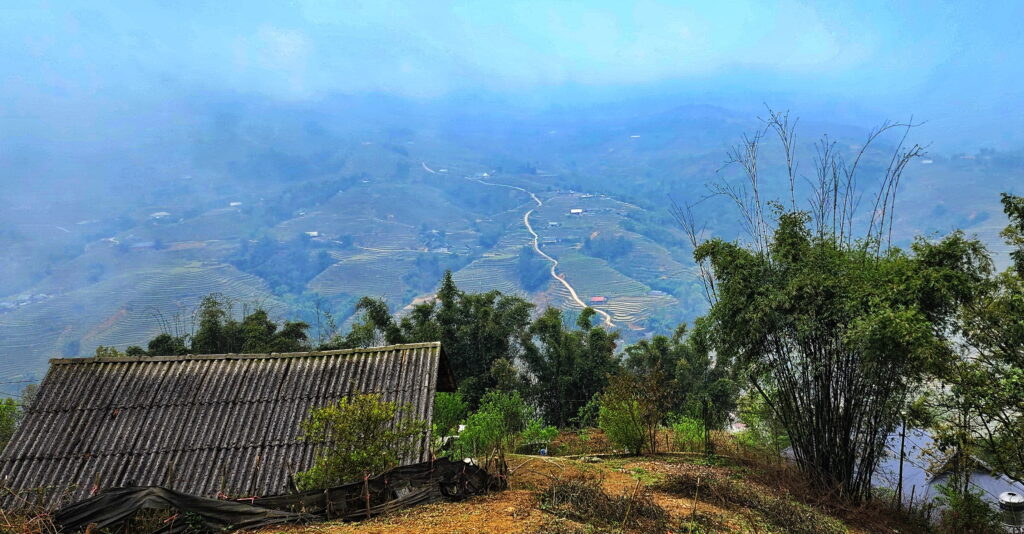
About another hour passed before we reached the highest point of the trek. This is the pleasant part as it is all the way down from here. This stretch of the walk is worth the climb. Here, your eyes sweep through the rolling valleys carved with rice terraces, revealing the contours of the undulating mountain terrain. Much of the hilly land looked as if it had been shaved, with only sparse clusters of trees here and there. But it was not unpleasant, and it had a certain kind of artful beauty. If I did not have to follow the tour group, I would linger around here longer, and perhaps have a picnic. I can imagine the mountain slopes bursting with golden rice stalks in September during harvest, and I suppose the hordes of tourists as well. But for now, I have to rely on my phone’s instant “remastering” edit function to cut through the haze to reveal a clearer view of mountain-scape before me.
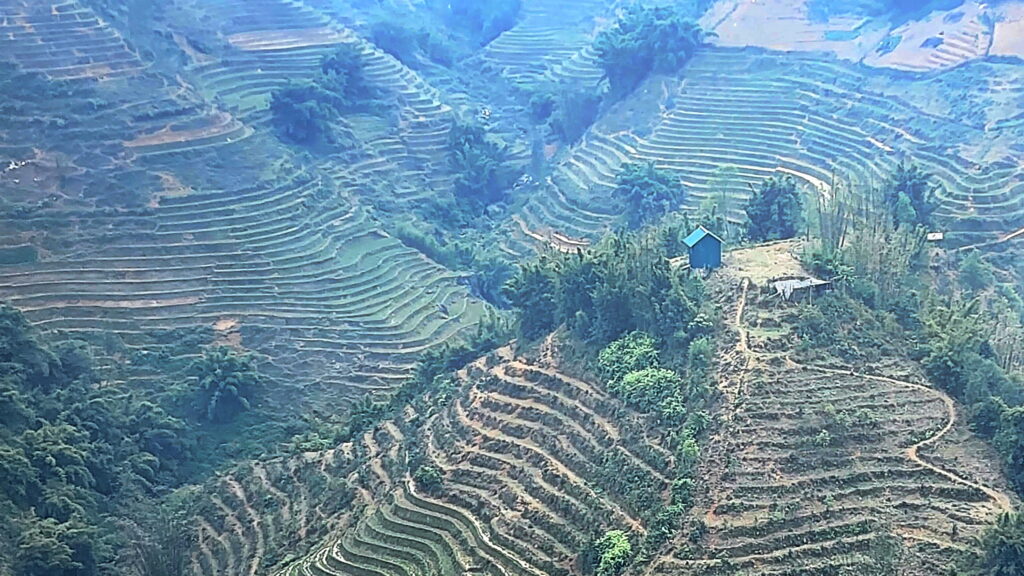
The climb had been strenuous, but apart from constantly lagging behind the main tour group, I was able to tolerate my backaches relatively well. Like all journeys, real or metaphorical, the last part of any walk is the sweetest as we creep closer to our destination, grateful that our struggle is going to be rewarded soon—in this case lunch.
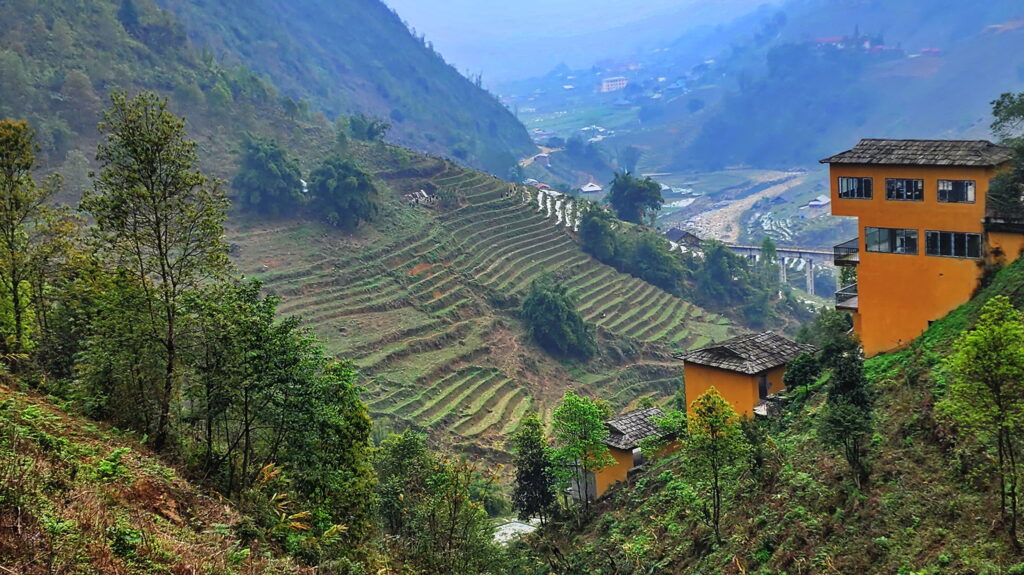
We walked leisurely down the winding path, taking in the various views of the hillsides unfolding before us. The mountains here are clearly working lands. Much of the it seemed to be commandeered for crop cultivation. Signs of human occupation were everywhere—sudden patches of exposed yellow earth, disrupted, almost untidy vegetation, broken rocks strewn along paths and carved-up hillsides. But the greatest imprint on the land must be the waves and waves of rice terraces, a testimony to the ingenuity of the people here in surviving and thriving in difficult terrain.
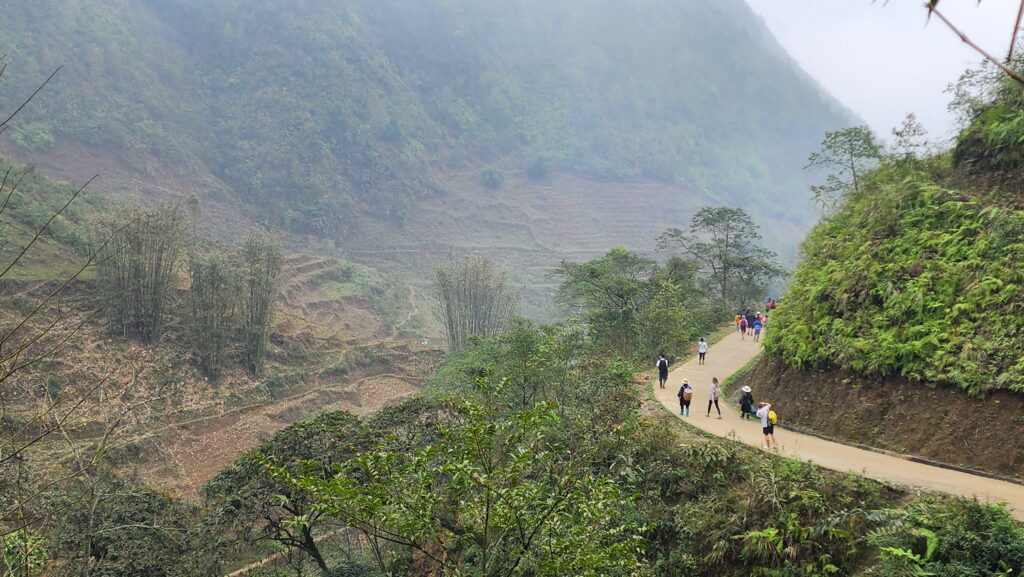
Lunch was a few stir-fry dishes with rice, nothing remarkable except for one of the very best pineapples I ever had. Even before we settled down at the lunch table, the Hmong women who accompanied us flew into action. Soon, colourful native woven bags, purses, bracelets and accessories were thrusted onto us. It was made obvious that we were obliged to buy from the two women who helped us negotiate the muddy paths during the trek by the universal law of gratitude. How can I refuse? Since I have stopped collecting knick-knacks and non-essentials in my minimalist life, I just gave two of them a fat tip without taking anything.
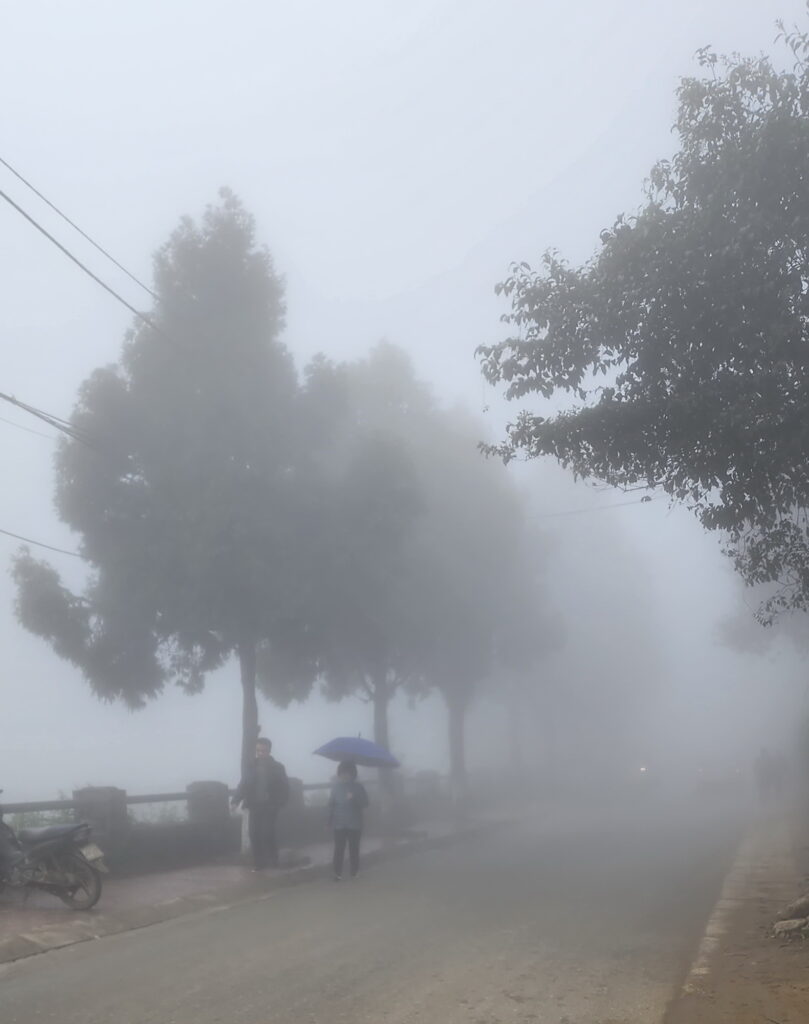
The fog seemed to have thickened when we left the mountains. After a brief rest in the hotel, we met up with some of our fellow travellers (the Korean and two Japanese students) for coffee at a trendy café (with trendy prices too) in town. Thereafter we headed in the growing thick fog to one of the many massage parlours for a hot herbal soak and massage to soothe away the muscle aches.
The fog progressed through the night and dashed our hope of making a short trip to Mount Fansipan in the morning. After breakfast, I walked out of the hotel briefly to test the severity of the weather and was soaked with tiny beads of fog water running down my jacket. It reminded me of a documentary I saw years ago on how people collect water from the fog by hanging a net to let the condensate drip down containers. No point going to the highest mountain in Indochina to look at the magnificent views shrouded in impenetrable mist. So, we while away the morning until it was time to head back to Hanoi.
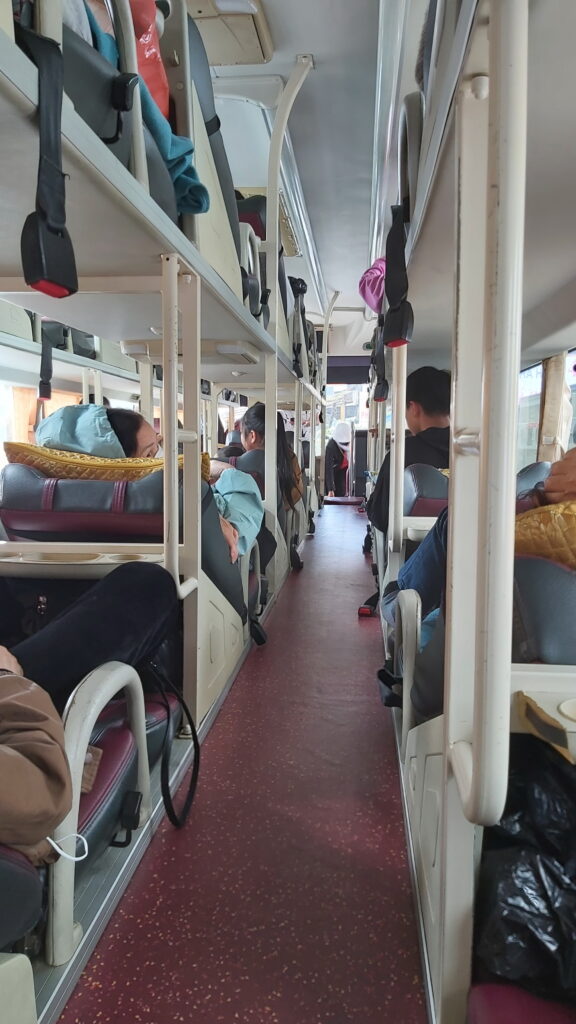
We took the same sleeper bus with the same driver we came with 3 days ago. I did not look forward to the 6-hour ride. A sleeper bus, as the name suggests, has seats in the form of a bed so one can lie down in comfort on a long journey. But this sleeper bus had narrow beds designed to maximize bus capacity, and the adjustable backrests were mostly not functioning. There were quite a few Caucasians on the bus, and the seats were obviously not designed with them in mind. A good idea, but poorly executed. I realized after some googling that there are more comfortable sleeper buses available, but our agent had booked us on the cheapest! Moreover, we had a driver from hell, who weaved in and out of traffic on the narrow highway at the sign of the tiniest gap available to overtake. After a while, I consoled myself that he must be skilful enough to dare challenge other vehicles and not cause us grief.
The only saving grace was that the view on both sides of the road to Hanoi was a pleasant contrast to the foggy day when we made our way to Sa Pa. The fog had largely drifted away, leaving behind rustic scenes of mountains near and far. Though farms, rice fields, construction work and a smattering of village houses dotted many areas, they did not detract from the beauty of the mountain landscape. It was a scenic ride, so different from the monotony of endless plantations of one kind or another on the highways I am familiar with north of Singapore.
We came in the fog, stayed in the fog and left with a glimpse of what could have been when it finally cleared at the last hour of our departure.
